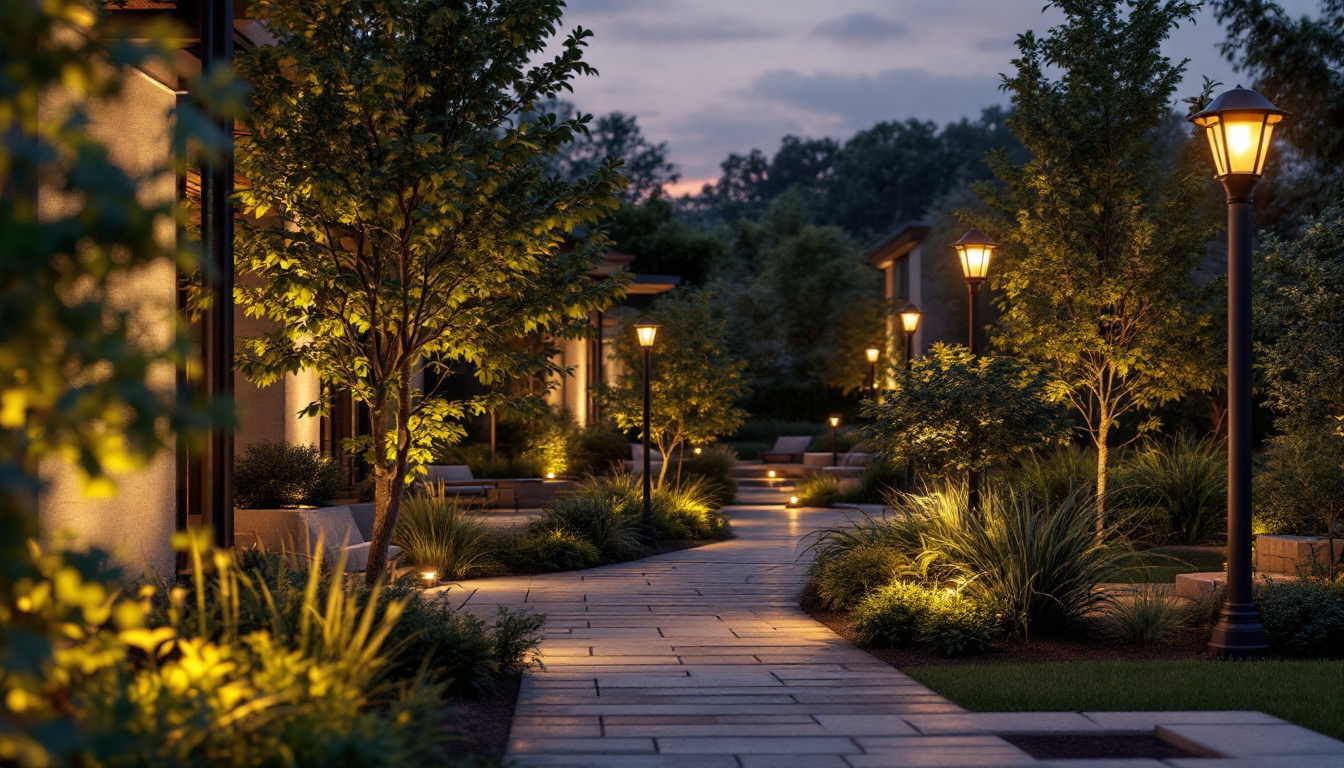
Lighting plays a crucial role in our daily lives, but when it comes to coastal areas, the impact of artificial lighting on wildlife, particularly sea turtles, cannot be overlooked. As lighting contractors, understanding the importance of turtle-friendly lighting is essential not only for compliance with regulations but also for the preservation of these magnificent creatures. This article explores the challenges lighting contractors face in implementing turtle-friendly lighting solutions and offers insights on how to overcome them.
Sea turtles are known for their remarkable life cycles, which include nesting on sandy beaches. Unfortunately, artificial light can disorient hatchlings, leading them away from the ocean and increasing their vulnerability to predators. Turtle-friendly lighting aims to minimize this disruption by utilizing specific design principles and technologies that reduce the impact of artificial light on these animals.
By adopting turtle-friendly lighting practices, lighting contractors can contribute to the conservation of sea turtles while also meeting the growing demand for environmentally responsible solutions. This not only helps in preserving biodiversity but also enhances the reputation of contractors as responsible and forward-thinking professionals. Moreover, the implementation of such lighting solutions can foster community awareness and engagement, as residents and visitors alike become more informed about the ecological significance of protecting these ancient mariners.
Implementing turtle-friendly lighting solutions presents several challenges for lighting contractors. These include regulatory compliance, technical limitations, and client education. Navigating these challenges effectively is crucial for successful project execution. Additionally, contractors must also consider the aesthetic preferences of clients, who may be hesitant to sacrifice traditional lighting designs for more eco-friendly options. This balancing act can complicate the decision-making process, requiring contractors to be both persuasive and informative.
Many coastal communities have established regulations regarding outdoor lighting to protect nesting sea turtles. These regulations can vary significantly from one jurisdiction to another, making it essential for contractors to stay informed about local laws and requirements. Failure to comply can result in penalties, project delays, or even the loss of contracts.
To overcome this challenge, contractors should invest time in understanding the specific regulations in their area. This may involve attending workshops, consulting with local wildlife agencies, or collaborating with environmental organizations. By proactively seeking knowledge, contractors can ensure their projects align with legal requirements while also promoting the welfare of sea turtles. Furthermore, engaging with local communities through educational outreach can help foster a culture of conservation, encouraging residents to support and advocate for turtle-friendly practices in their neighborhoods. This grassroots involvement not only enhances the effectiveness of lighting projects but also strengthens the bond between contractors and the communities they serve, creating a shared commitment to the protection of these magnificent creatures.
Another significant challenge in implementing turtle-friendly lighting is the technical limitations associated with available products and technologies. Traditional lighting solutions often do not meet the criteria for turtle-friendly designs, which typically require low-intensity, shielded fixtures that emit minimal blue light. The spectrum of light emitted by standard fixtures can disorient hatchlings, leading them away from the ocean and towards hazardous areas. This disorientation not only impacts their survival rates but also disrupts the delicate balance of the coastal ecosystem.
Choosing the right products is essential for creating effective turtle-friendly lighting. Many contractors may find that the options available in the market are limited, particularly when it comes to fixtures that meet both aesthetic and functional requirements. This can lead to frustration and hesitation when it comes to recommending solutions to clients. Furthermore, the lack of standardized certifications for turtle-friendly products can complicate the selection process, as contractors must rely on their knowledge and experience to identify suitable options.
To address this issue, contractors should actively seek out manufacturers that specialize in turtle-friendly lighting products. Engaging with suppliers who understand the unique needs of coastal environments can help contractors access a broader range of suitable fixtures. Additionally, staying updated on advancements in lighting technology can provide new opportunities for innovative solutions. For instance, the development of smart lighting systems that can adjust their intensity based on the time of day or environmental conditions offers promising avenues for minimizing light pollution while maintaining safety and visibility.
Designing turtle-friendly lighting systems requires a thoughtful approach that considers both the needs of the client and the welfare of sea turtles. This may involve rethinking traditional lighting layouts, adjusting fixture placements, and selecting appropriate color temperatures. The use of warmer color temperatures, such as amber or red, can significantly reduce the impact on turtle behavior, as these wavelengths are less disruptive to their natural navigation instincts.
Contractors can overcome design challenges by collaborating with landscape architects and environmental consultants. By working together, they can create lighting designs that enhance safety and aesthetics while minimizing the impact on wildlife. Utilizing software tools for lighting simulations can also help visualize the effects of different designs, allowing for informed decision-making. Moreover, incorporating natural elements such as vegetation can further shield light from reaching nesting areas, creating a more harmonious environment for both human inhabitants and sea turtles. Engaging the community in awareness campaigns about the importance of turtle-friendly practices can also foster a sense of stewardship, encouraging local residents to support and maintain these initiatives long-term.
One of the most significant hurdles lighting contractors face is educating clients about the importance of turtle-friendly lighting. Many clients may be unaware of the ecological implications of their lighting choices or may prioritize aesthetics over environmental concerns. As advocates for responsible lighting practices, contractors play a vital role in bridging this knowledge gap.
When discussing turtle-friendly lighting with clients, it is essential to communicate the benefits clearly. Highlighting the ecological advantages, such as contributing to the preservation of endangered species, can resonate with environmentally conscious clients. Additionally, emphasizing the potential for increased property value and community goodwill can further motivate clients to consider turtle-friendly options.
Providing case studies or examples of successful turtle-friendly lighting projects can also be an effective way to illustrate the positive impact of these solutions. By showcasing real-world applications, contractors can help clients visualize the benefits and inspire them to make informed choices. For instance, sharing stories of coastal properties that have implemented turtle-friendly lighting and subsequently seen an increase in local turtle populations can create a compelling narrative that emphasizes the tangible outcomes of responsible lighting choices.
Lighting contractors can also engage with the local community to promote awareness of turtle-friendly lighting. Hosting informational workshops or participating in community events can provide opportunities to educate residents and business owners about the importance of responsible lighting practices.
Collaborating with local environmental organizations can amplify these efforts. By joining forces, contractors can leverage the expertise of conservationists and wildlife advocates to create a more comprehensive educational campaign. This not only raises awareness but also positions contractors as leaders in sustainable lighting practices within the community. Furthermore, by organizing community clean-up days or beach restoration projects, contractors can demonstrate their commitment to environmental stewardship while fostering a sense of community involvement. Such initiatives can serve as a platform for further discussions about the importance of lighting choices, ultimately leading to a more informed public that prioritizes ecological well-being.
As the demand for turtle-friendly lighting continues to grow, lighting contractors have the opportunity to explore innovative solutions that address both environmental concerns and client needs. Emerging technologies and design trends can pave the way for more effective and aesthetically pleasing lighting systems.
Smart lighting technology presents an exciting opportunity for contractors to enhance turtle-friendly lighting solutions. By integrating sensors and automation, contractors can create lighting systems that adjust based on environmental conditions, minimizing light pollution during critical nesting periods.
For instance, motion sensors can be used to turn lights on only when necessary, reducing overall light exposure. Additionally, programmable timers can ensure that lights are dimmed or turned off during peak nesting seasons, further protecting vulnerable hatchlings. By embracing smart technology, contractors can offer clients cutting-edge solutions that align with both ecological and operational goals.
Collaborating with environmental scientists and researchers can also lead to innovative lighting solutions. By working together, lighting contractors can gain insights into the specific needs of local wildlife and develop tailored lighting designs that address those needs effectively.
Such partnerships can result in the creation of new products or design methodologies that prioritize wildlife conservation. Engaging in research initiatives can also position contractors as thought leaders in the industry, enhancing their reputation and attracting environmentally conscious clients.
In conclusion, the challenges associated with implementing turtle-friendly lighting solutions are significant but not insurmountable. By understanding the importance of these practices, staying informed about regulations, selecting appropriate products, and engaging clients and communities, lighting contractors can successfully navigate the complexities of this vital area.
As the demand for sustainable lighting continues to rise, contractors have a unique opportunity to lead the way in promoting responsible lighting practices that protect sea turtles and enhance coastal environments. By embracing innovation and collaboration, lighting contractors can overcome challenges and contribute to a brighter, more sustainable future for both humans and wildlife.
Ready to take the next step in providing turtle-friendly lighting solutions? At LumenWholesale, we support your commitment to sustainability by offering a wide range of high-quality, specification-grade lighting products at unbeatable wholesale prices. Say goodbye to inflated markups and hello to superior lighting that meets the highest industry standards. Make your next project a win for both your clients and the environment with our hassle-free bulk buying options and free shipping. Elevate your lighting game and contribute to a sustainable future with Wholesale Lighting at the Best Value from LumenWholesale.

Discover why solar yard lights are becoming an essential tool for lighting contractors.

Discover the pivotal role of Pol LED technology in revolutionizing the lighting industry.

Illuminate your projects with expert tips and insights on outdoor post lighting.

Discover the essential insights lighting contractors need to know about lighting sensors.